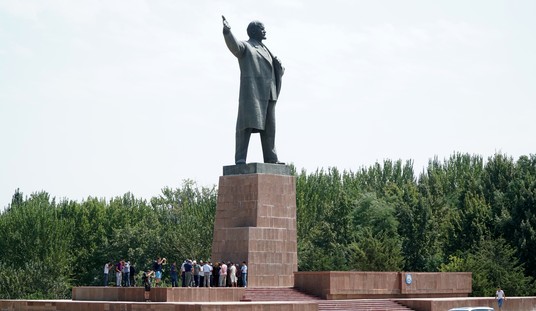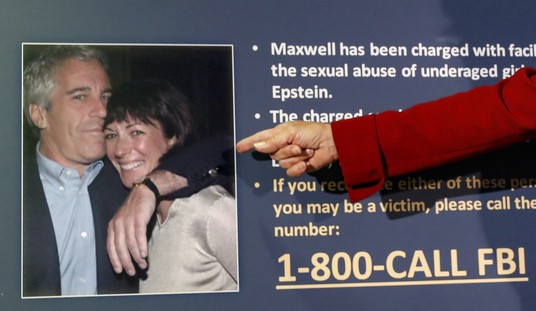“Her directing career ended with the Third Reich,” Mark Steyn writes in an 80th anniversary essay on Leni Riefenstahl’s infamous agitpropumentary, Triumph of the Will. As Mark notes, had Riefenstahl “been worse at making the Nazis look good, her insistence that she was no more than a hired hand might have been accepted,” which would have resulted perhaps in a very different postwar life. (Riefenstahl lived to be 101, dying in 2003):
Did Leni get Adolf to do re-takes? Or maybe she made the entire population of Nuremberg re-take the scene; maybe they staged the procession twice. If Hitler was unusually agreeable about taking direction, it was because this was never a filmed record of an event so much as an event created for the film. Whatever Triumph Of The Will is, it’s not a documentary. Its language is that of feature films – not Warner Brothers gangster movies or John Ford westerns, but rather the supersized genres, the epics and musicals where huge columns of the great unwieldy messy mass of humanity get tidied and organized — and, if that isn’t the essence of totalitarianism, what is? Riefenstahl has the same superb command of the crowd as Busby Berkeley, the same flair for human geometry (though Berkeley would have drawn the line at giving the gentlemen of the chorus as swishy a parade step as Hitler’s personal SS bodyguard do).
The sets (that’s what they are) that were built for Hitler’s speeches blend Cecil B. de Mille with expressionist sci-fi: no party convention in Britain, Canada or even Obama’s America ever offered its leader a stage like this. It exists in the same relationship to reality as, say, Berkeley’s “Lullaby Of Broadway” sequence in Gold Diggers Of 1935: in that scene, the conceit is that the number’s taking place in a nightclub, but, as the song continues and the dancers multiply and the perspective extends ever further into the distance, you realise that no nightclub anywhere on earth has a stage that vast. Riefenstahl stretches reality in the same way, beginning in the streets of old Nuremberg with the band serenading Hitler below the balcony of his ivy-clad hotel, and steadily abandoning human scale until the Führer is standing alone atop a giant stone block as thousands of standard-bearing party members march in formation below: extras on a set. In the 21st century, you can see Riefenstahl’s influence in the work of George Lucas (Star Wars) and Paul Verhoeven (Starship Troopers), both filmmakers for whom the principal thrill of directing seems to be the opportunity it affords to subordinate the individual.
George Lucas’s Star Wars begins with its iconic logo, about which its designer later explained, “Suzy Rice, who had just been hired as an art director, remembers the job well. She recalls that the design directive given by Lucas was that the logo should look ‘very fascist.'”
The film ends with the Rebels, the film’s “good guys,” about whom Lucas told interviewers he had modeled after Communist North Vietnam, tromping through a giant hall to pick up their awards. As numerous critics have noted over the years, it’s a scene whose composition was straight out of Riefenstahl’s Triumph of the Will. Given the similarities that exist back in the real world between national socialism and international socialism, perhaps his notion that his film’s beginning and end wound up looking “very fascist” is more appropriate than even Lucas knew at the time.
As for Paul Verhoeven’s silly but entertaining 1997 version of Starship Troopers, his film merged the propaganda techniques, the massed geometries of soldiers at attention, and the uniforms of all of the major World War II participants, down to Neil Patrick Harris’s infamous leather greatcoat worn in the film’s last scene. (“Doogie Himmler!”, as one wag exclaimed at the time in an early review.) Verhoeven’s Troopers crudely anticipates the argument made in Jonah Goldberg’s Liberal Fascism regarding the intertwined nature of the socialist ideologies the players in World War II all shared. Not surprisingly, that wasn’t an argument leftwing film critics wanted to hear while Bill Clinton was in office, which likely accounted for its many bad initial reviews. But oh, the hosannas Starship Troopers would have garnered from “liberal” critics had it been released in 2004…
[jwplayer player=”1″ mediaid=”75672″]










Join the conversation as a VIP Member